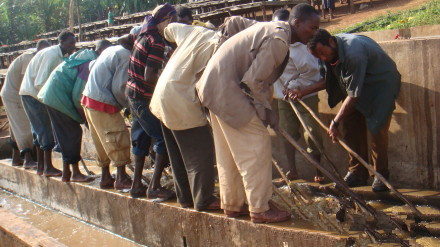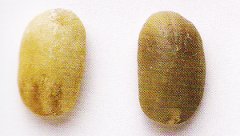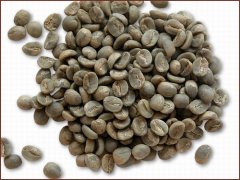High-quality coffee to learn the treatment of coffee beans

Coffee beans must be disposed of immediately after harvest so as not to go bad. The producer will use two methods of treatment: the sun method and the cleaning method. An effective way to bask in the sun is to spread the berries flat in the yard and stir the dehydrated berries from time to time to make them evenly heated and breathable. Then put the dried berries into the machine, crush the shell, and remove the shell and a parchment film at the same time, separate the coffee beans, and then sort and bag them. In another way, the berries are mechanically removed, washed, dried and separated from the sheepskin-like outer membrane. Either way, the first goal is to reduce 65% moisture in coffee berries to only 10-12% raw (green) coffee beans.
One of the biggest challenges to making good coffee is to make sure to start with good raw coffee beans. Top manufacturers, such as Yili Coffee in Trieste, Italy, use many complex labor management techniques to reduce the proportion of defective coffee beans. These include the use of ultraviolet fluorescence analysis to pick out moldy beans and the use of tricolor images (yellow-green, red and infrared) to establish color fingerprints for each batch of beans. The Italian Coffee Company has partnered with the British company Sotex to develop a two-color light classification system to do the final quality control before raw coffee beans are roasted. The way is that the photodetector picks out the bad beans from the beans that fall on the plate, and then removes them separately with a blow from the air nozzle. This classification operates at a speed of up to 400 beans per second, which is not comparable to that of any man, and its accuracy is not as accurate as that of the most trained human eyes.
A perfectly mature raw coffee bean, made up of unusually thick-walled cells, can be as thick as 5-7 microns, which is rare in the plant world. During baking, these cells with a diameter of 30 to 40 microns act like microreactors, where all the important chemical reactions driven by heating take place, resulting in the fascinating taste and aroma of coffee. On the one hand, the cell wall of immature coffee beans is thin, and there is no important flavor protein precursor produced in the final stage of ripening. These important substances in the cells are also emptied from beans fermented by bacteria or mold.
Important Notice :
前街咖啡 FrontStreet Coffee has moved to new addredd:
FrontStreet Coffee Address: 315,Donghua East Road,GuangZhou
Tel:020 38364473
- Prev

How to choose coffee beans by hand
Apples don't taste different because of size, which I agree with, but in the roasting of coffee beans, it doesn't matter if they're heated anyway. Coffee beans harvested from the same tree, regardless of size
- Next

Boutique coffee learns how to choose raw coffee beans
What kind of raw beans are high-quality raw beans? First look at the surface of beans, fresh and high-quality raw beans, the surface is shiny, in addition, the processing of good raw beans, uniform color, the surface of uneven color can not be called good beans, must choose uniform color. Secondly, the particle size is the same, which is also evidence of good quality management. Make sure that the particle size is the same when you buy it.
Related
- What is the meaning of lactic acid fermentation with coffee bean treatment?
- How to judge the state of foam by sound?
- How does the latte pull out the unicorn pattern? Come to get for a little trick to improve the flower pull!
- Will flower pulling affect the taste of the latte?
- Do you know the history of coffee?
- The difference between honey treatment and sun washing what is raisin honey treatment?
- What kind of milk can a novice use to make coffee foam to keep the foam longer? The correct method and skills of milking tutorial sharing
- Why do washed coffee beans taste sour? Flavor characteristics of washed Coffee
- Introduction to the skill of how to practice the size and height of water injection around the circle of hand-brewed coffee
- How do beginners practice coffee flower drawing from scratch?

